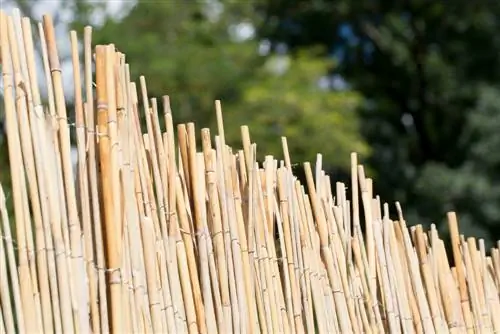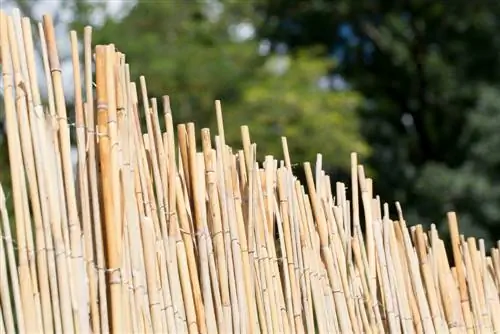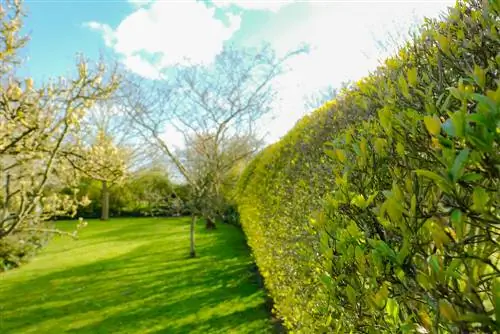- Author admin [email protected].
- Public 2023-12-16 16:46.
- Last modified 2025-01-23 11:22.
At some point gardeners just want to relax and switch off. A beautiful seating area bordered with bamboo not only looks fantastic, but also serves its purpose as a wind and privacy screen. But what should you pay attention to?

Which types of bamboo are suitable as windbreaks?
Fargesia (umbrella bamboo) and Phyllostachys (flat reed bamboo) are best suited as windbreaks. Both species grow quickly, are opaque, are green all year round and form a natural, loose hedge. For Phyllostachys, a rhizome barrier is recommended to prevent uncontrolled spreading.
Which types of bamboo are suitable as wind and privacy protection?
Basically there are two types of bamboo that are particularly suitable as a windbreak, but also as a privacy screen in the garden. On the one hand, there isFargesia, also known as umbrella bamboo. On the other hand, it is the so-called flat-tube bamboo (Phyllostachys). These two species growfast and opaque You can plant them specifically as a hedge and within a few weeks to months you will get a natural, loose and Asian-inspired windbreak, which also serves as a privacy screen and boundary to other properties or areas.
What should you consider when planting Phyllostachys?
Phyllostachys should not just be thoughtlessly planted in the garden. The tricky thing about this type of bamboo is that it canspread very quickly. The reason is the underground foothills. Therefore, if you plant this species, you should definitely apply aRhizome Barrier. This can be done, for example, in the form of lawn edging stones or concrete.
What makes bamboo so special as a wind and privacy screen?
In contrast to many well-known domestic hedge plants, bamboo isgreen all year roundIt retains its decorative foliage even in frosty temperatures. Furthermore, in ideal locations, itquicklyreaches a considerable final height of 3 to 10 m. Its average 10 to 30 mm thick pipes are extremelystableandlong-lasting It can even be used as a fence. As a building material, it does not necessarily need a coat of paint, but rather protects itself through the glossy surface, which acts as a protective film.
How to keep bamboo under control?
In addition to a rhizome barrier, there are other ways to keep the bamboo's growth under control. For example, you can plant it in apotor choose a variety thatdoes not produce runners. If you like it straight, you don't need to plant bamboo, just getbamboo tubes from the hardware store, tie them together and attach them correctly to the appropriate place as a windbreak.
Which is the right bamboo?
When you are spoiled for choice when it comes to bamboo varieties, it is important to keep the essentials in focus. If you want the bamboo to act as a reliable windbreak for many years, it is important to choose a wellhardy variety. It should also bevigorousand produce adense leaf mass.
Tip
Be sure to keep your distance
Since the long stalks tend to bend in the wind, there is a risk that surfaces will be damaged if the distance to buildings, walls, etc. is too close. Therefore, depending on the variety, you should ensure a distance of 1.50 to 2 m or alternatively tie the stalks together.






